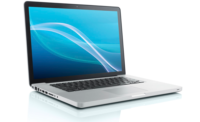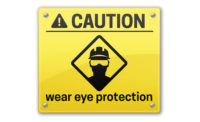Note: This article is for information purposes only. It is not intended for any type of treatment. Consult your healthcare provider for expert eye care.
Share this information with your workforce, a large percentage is probably glued to computer screens throughout the work day:
Get an eye exam.
Computer users should have an eye exam before they start working on a computer and once a year thereafter, according to NIOSH.
Use good lighting.
When you use a computer, your ambient lighting should be about half as bright as that typically found in most offices.
Try reducing the number of fluorescent tubes installed above your computer workspace if you are bothered by overhead lighting. Use floor lamps that provide indirect incandescent or halogen lighting instead.
Minimize glare.
Perhaps an anti-glare screen on your monitor would be helpful. Cover the windows. When outside light cannot be reduced, consider using a computer hood.
If you wear glasses, purchase lenses with anti-reflective (AR) coating. AR coating reduces glare by minimizing the amount of light reflecting off the front and back surfaces of your eyeglass lenses. (Editor’s note: A number of PPE safety prescription glasses have this feature.)
Flat-panel LCD screens are easier on the eyes than old computer monitors.
Upgrade your display.
LCD screens usually have an anti-reflective surface. Old-fashioned screens can cause a noticeable "flicker" of images, which strains the eye.
When selecting a flat panel display, select a screen with the highest resolution possible. Resolution is related to the "dot pitch" of the display. Generally, displays with a lower dot pitch have sharper images. Choose a display with a dot pitch of .28 mm or smaller.
Choose a relatively large display. For a desktop computer, select a display that has a diagonal screen size of at least 19 inches.
Adjust computer display settings.
Brightness. Adjust the brightness of the display so it's approximately the same as the brightness of your surrounding workstation. Look at the white background of this Web page. If it looks like a light source, it's too bright. If it seems dull and gray, it may be too dark.
Text size and contrast. Adjust the text size and contrast for comfort, especially when reading or composing long documents. Usually, black print on a white background is the best combination for comfort.
Color temperature. This describes the spectrum of visible light emitted by a color display. Reducing the color temperature of your display lowers the amount of blue light emitted by a color display for better long-term viewing comfort.
Text size and color on your screen
According to computer vision syndrome expert Dr. James Sheedy, text size should be three times the smallest size that you can read from your normal viewing position.
The best color combination for your eyes is black text on a white background, though other dark-on-light combinations also work well.
Adjust your screen's resolution and brightness, for best visual comfort, whether using a laptop, desktop, tablet or smartphone .
Blink more often.
People blink less frequently when at a computer — about one-third as often as they normally do — and many blinks performed during computer work are only partial lid closures, according to studies.
Try this exercise: Every 20 minutes, blink 10 times by closing your eyes as if falling asleep (very slowly). This will help rewet your eyes.
Exercise your eyes.
To reduce the risk of tiring eyes by constantly focusing on a screen, look away at least every 20 minutes and gaze at a distant object (at least 20 feet away) for at least 20 seconds.
Another exercise is to look far away at an object for 10-15 seconds, then gaze at something up close for 10-15 seconds. Then look back at the distant object. Do this 10 times.
Take frequent breaks.
According to a recent NIOSH study, discomfort and eye strain were significantly reduced when computer workers took four additional five-minute "mini-breaks" throughout their work day.
These breaks did not reduce the workers' productivity. Data entry speed was significantly faster as a result of the extra breaks, so work output was maintained even though the workers had 20 extra minutes of break time each day.
During your computer breaks, stand up, move about and stretch your arms, legs, back, neck and shoulders to reduce tension and muscle fatigue.
Modify your workstation.
If you need to look back and forth between a printed page and your computer screen, place written pages on a copy stand adjacent to the monitor.
Light the copy stand properly. You may want to use a desk lamp.
Adjust your workstation and chair to the correct height for good posture
Position your computer screen 20 to 24 inches from your eyes. The center of your screen should be about 10 to 15 degrees below your eyes for comfortable positioning of your head and neck.
Consider computer eyewear.
You might benefit from having your eye care professional modify your eyeglasses prescription to create customized computer glasses. Contact lensesmay become dry and uncomfortable during sustained computer work. Computer glasses are a good choice if you wear bifocalsor progressive lenses; these lenses generally are not optimal for the distance to your computer screen.


